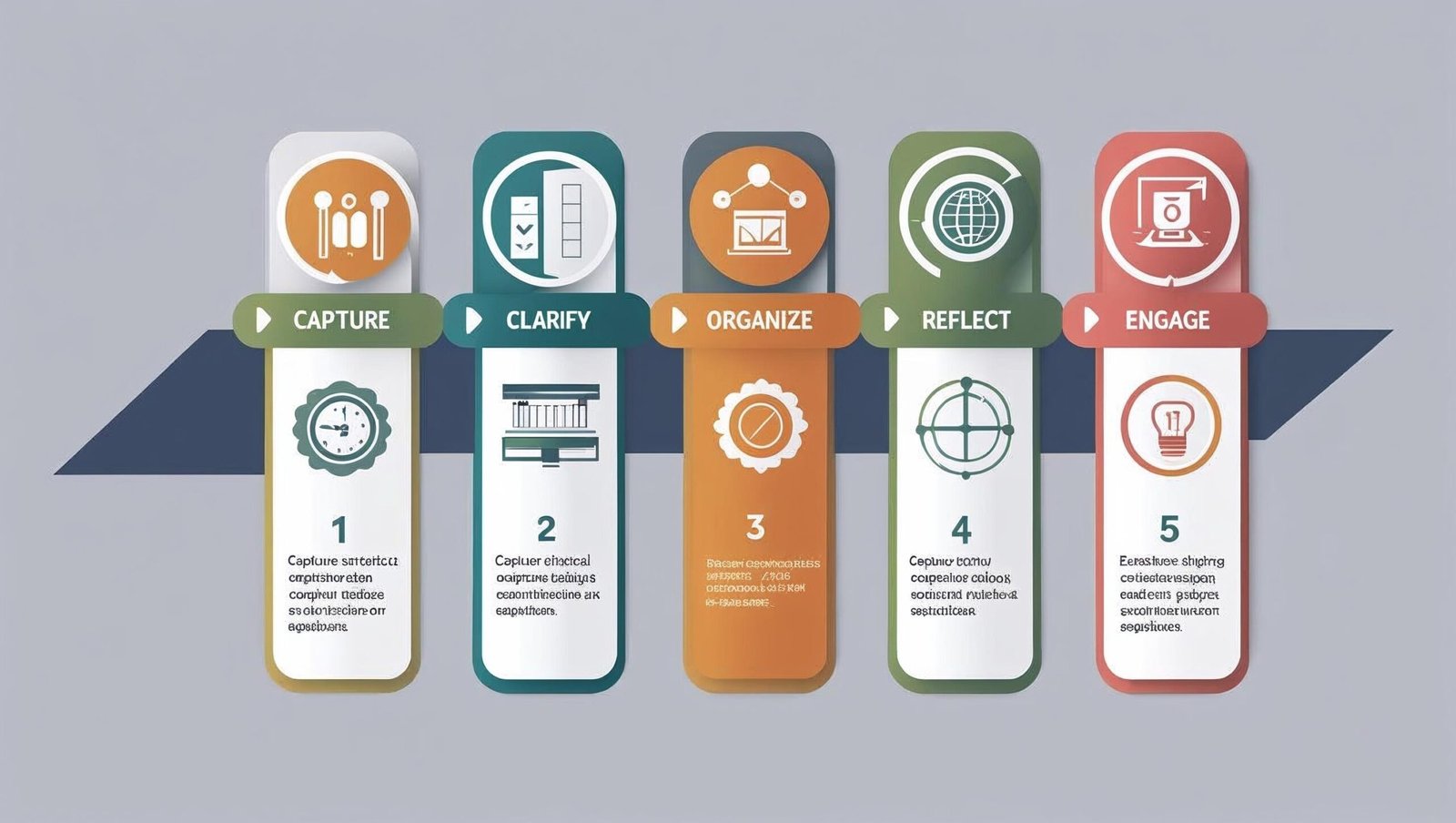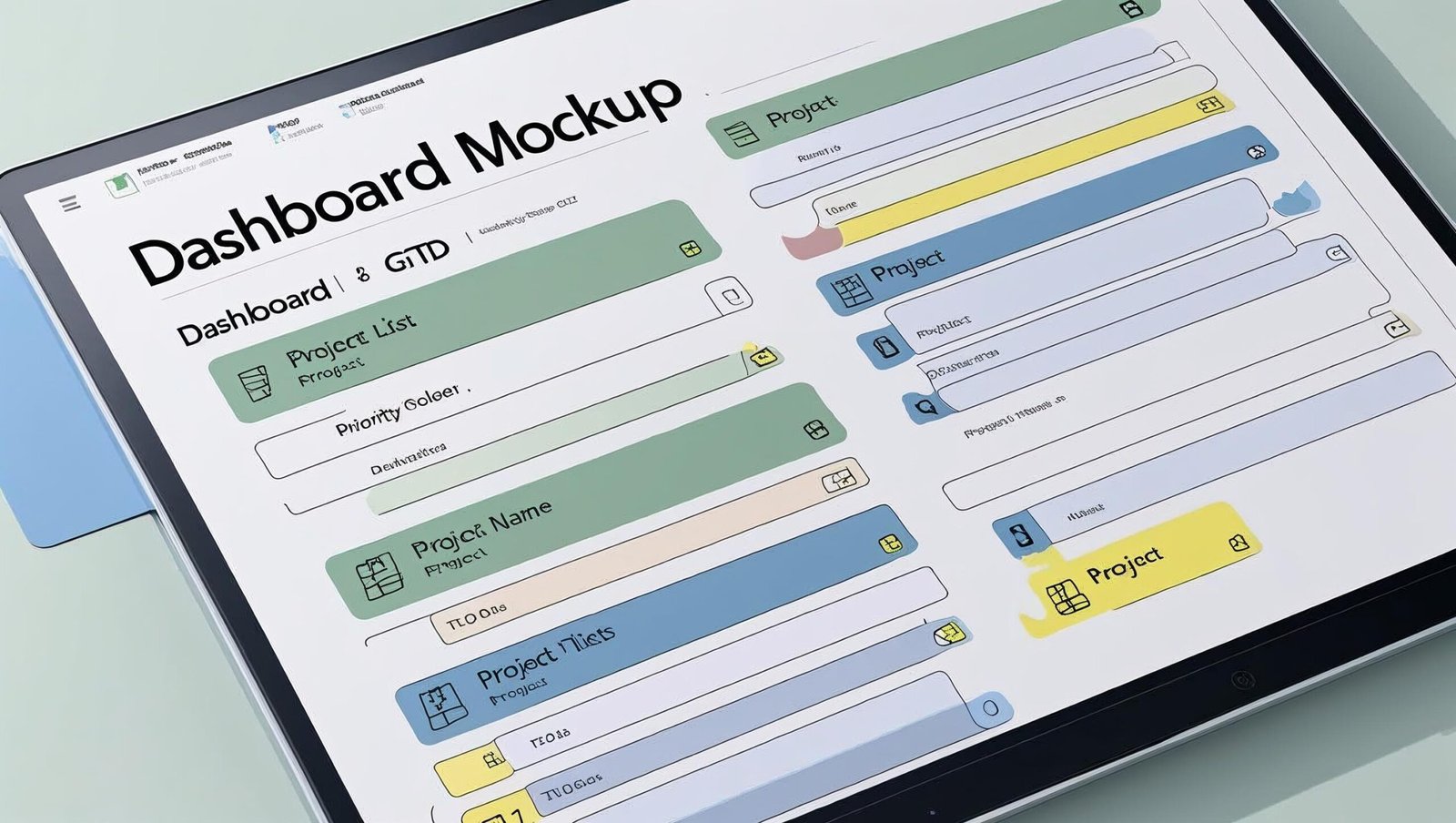📚 Book Review: Getting Things Done by David Allen – A Deep Dive into Personal Productivity
In an age where distractions multiply and attention spans dwindle, reclaiming control over one’s work and mental space becomes essential. Getting Things Done by David Allen is not just a book; it is a comprehensive system that promises to deliver clarity, efficiency, and peace of mind. This method, often abbreviated as GTD, has emerged as a globally acknowledged framework for managing tasks, ideas, and projects seamlessly.
This detailed review unfolds the principles, methodology, and profound impact of Getting Things Done by David Allen. Through its pages, readers gain insights that can dramatically transform how they approach daily responsibilities—be it at work, home, or in life.

🔶 Introduction to Getting Things Done by David Allen
David Allen is a productivity consultant with decades of experience in organizational development and time management. His book, Getting Things Done by David Allen, was first published in 2001 and has since garnered a cult following among productivity enthusiasts, corporate leaders, students, and entrepreneurs alike.
The core philosophy revolves around this simple truth: “Your mind is for having ideas, not holding them.” Allen suggests that we overload our cognitive space with too many open loops, creating stress and inefficiency.
🔷 The Five-Step Workflow of Getting Things Done by David Allen
At the heart of Getting Things Done by David Allen lies a five-step workflow that helps individuals capture, clarify, organize, reflect, and engage.
1. Capture – Collect What Has Your Attention
Allen emphasizes the importance of capturing every single thing that requires your attention. This might include tasks, ideas, plans, reminders, or concerns. These are then stored in an external system like a notebook or app, so your mind can relax.
2. Clarify – Process What It Means
Once captured, each item must be clarified. Is it actionable? If yes, define the next step. If no, trash it, delegate it, or incubate it for later.
3. Organize – Put It Where It Belongs
Everything clarified must be stored appropriately. Tasks with deadlines go on calendars, reference materials into folders, and actionable tasks into context-based lists.
4. Reflect – Review Frequently
This involves weekly reviews of your system. A crucial discipline in Getting Things Done by David Allen is making sure your system is up-to-date and trustworthy.
5. Engage – Do the Work
Finally, you decide what to do based on context, time available, energy levels, and task priority.
🔶 Why Getting Things Done by David Allen Still Matters Today
In an era ruled by digital overwhelm and constant multitasking, the principles of Getting Things Done by David Allen are more relevant than ever. The GTD method creates a sense of psychological safety, ensuring that no task or idea is forgotten. It liberates the mind from chaotic to-do lists and anxiety-laden reminders.
Instead of constantly reacting, readers of Getting Things Done by David Allen learn to respond with intention and control.
🔷 Core Concepts Explored in Getting Things Done by David Allen
✅ The “Mind Like Water” Principle
Allen borrows from martial arts to explain that when the mind is free from clutter and perfectly balanced, it responds to demands appropriately. This metaphor of “Mind Like Water” reflects the mental clarity one gains from using GTD effectively.
✅ The Two-Minute Rule
If something can be done in under two minutes, do it immediately. This deceptively simple rule can result in a surprising reduction in task backlog.
✅ Projects List
Allen insists that anything requiring more than one action is a project. Keeping a running Projects List helps you track commitments and plan accordingly.
✅ Contextual Task Lists
Tasks are best organized not just by priority, but by context—calls, emails, errands, etc. This facilitates productivity based on where you are and what tools you have.
🔶 Benefits of Following Getting Things Done by David Allen
-
Reduced Stress: By offloading mental clutter, you decrease anxiety and improve focus.
-
Greater Clarity: GTD helps you define next actions and outcomes for each responsibility.
-
Enhanced Productivity: Through systematized workflows, one can accomplish more in less time.
-
Improved Accountability: With clear records of commitments and projects, follow-through becomes automatic.
-
Mental Freedom: Perhaps the most transformative result is the sense of control over your time and energy.

🔷 Personal Transformation Through Getting Things Done by David Allen
Readers often report a personal evolution after implementing GTD. They become more mindful of their time, selective with commitments, and better at saying no. This book doesn’t just change your task management system—it reshapes your relationship with responsibility and purpose.
A person struggling with procrastination, for instance, might find new hope in the structured approach of Getting Things Done by David Allen. Instead of feeling defeated by long task lists, they begin to conquer them one contextually relevant action at a time.
🔶 Challenges in Implementing Getting Things Done by David Allen
While the system is elegant, it is not without its difficulties. The initial setup can feel overwhelming. Many users abandon the method mid-way because of poor execution or unrealistic expectations.
However, as David Allen repeatedly suggests, the system only works when you work the system.
A consistent weekly review, dedicated capture tools, and disciplined task tracking are non-negotiable.
🔷 Practical Tips to Master Getting Things Done by David Allen
-
Start Small: Begin with capturing everything on your mind.
-
Use Digital Tools Wisely: Apps like Todoist, Notion, and Evernote can help, but simplicity is key.
-
Commit to Weekly Reviews: Without this, the system collapses.
-
Avoid Over-Categorization: The simpler your system, the more sustainable it becomes.
-
Stay Flexible: GTD is a framework, not a rigid rulebook.
🔷 Deepening the Impact: Real-Life Applications of Getting Things Done by David Allen
While theory and structure lie at the heart of any productivity system, true transformation begins when we bring those concepts to life through consistent action. The beauty of Getting Things Done by David Allen is its versatility—it is not confined to office work, executive schedules, or managerial dashboards. It works for everyone.
Let’s explore how the principles of this book seamlessly integrate into different walks of life.
🔹 GTD for Professionals
In a demanding corporate environment, multitasking often leads to shallow work. Employees hop between meetings, emails, project deadlines, and client communications. In this cluttered context, the GTD method acts as a lifeline.
Consider a marketing manager juggling multiple campaigns. By implementing the capture and clarify stages of Getting Things Done by David Allen, they can break each campaign down into actionable next steps. Instead of keeping ideas in their head, everything—meeting follow-ups, media buys, client notes—is captured in one trusted system. Weekly reviews help them prioritize intelligently.
This method also reduces reactivity. Rather than jumping to every email or Slack ping, they operate from a system of conscious engagement, responding based on context and priorities.

🔹 GTD for Entrepreneurs
Entrepreneurs, especially solo founders, face the burden of decision fatigue. They’re responsible for every detail—from product development to customer service.
In such a setting, Getting Things Done by David Allen provides a scaffold. It helps in separating long-term visions from immediate actions. Instead of drowning in vague goals like “grow the business,” entrepreneurs can turn these into project lists with clearly defined next actions: “research competitor pricing,” “schedule product photoshoot,” or “update checkout page UI.”
Moreover, when ideas strike during non-work hours—a common entrepreneurial occurrence—capturing them in a trusted system ensures nothing slips through the cracks.
🔹 GTD for Students
Often overlooked, students benefit immensely from applying GTD principles. Academic life includes a flurry of tasks—assignments, group projects, study plans, deadlines, exams, and extracurriculars. Without a structured system, stress mounts.
Through Getting Things Done by David Allen, a student can maintain mental clarity and academic discipline. They might maintain context-based task lists such as “Library Tasks,” “Group Project Discussions,” or “Online Research.” This ensures that when they are in the right context (e.g., at the library or online), they know exactly what to do.
Weekly reviews can help identify gaps, such as an approaching exam that needs more preparation or a pending research submission that requires advisor input.
🔶 Addressing Common Misconceptions About Getting Things Done by David Allen
Despite its global popularity, many people dismiss the GTD method prematurely due to common misconceptions. Let’s debunk a few of these.
❌ “It’s Too Complicated”
At first glance, the framework of capturing, clarifying, organizing, reflecting, and engaging might feel overwhelming. People often assume that GTD requires expensive software, countless folders, or excessive documentation. But at its core, it is about mental clarity and task integrity. The tools are secondary.
Even a simple notebook can serve as a powerful GTD system. The method’s complexity can be scaled to match the user’s comfort level.
❌ “It Takes Too Much Time”
Time invested in building a system is often mistaken as time lost. The truth is, without a system, we waste far more time every day. Think of the minutes spent trying to remember what to do next, scanning messy to-do lists, or switching between tasks inefficiently.
GTD doesn’t steal your time—it gives it back in a structured, focused form.
❌ “It’s Only for Type-A Personalities”
Contrary to this belief, Getting Things Done by David Allen caters to everyone. It doesn’t demand perfection; it offers structure to chaos. Creative professionals, artists, and even people with ADHD have reported enormous value in using GTD. The system’s externalization of mental clutter particularly benefits those with nonlinear thinking patterns.
🔷 Technology and Tools to Implement GTD Effectively
Though Getting Things Done by David Allen advocates flexibility in tools, the modern digital landscape offers plenty of productivity apps that complement the GTD method beautifully. Here are some notable ones:
🟩 Todoist
A simple, elegant task manager that allows users to create context-based labels, priority levels, and project folders—ideal for implementing the “Next Actions” and “Projects List.”
🟩 Evernote
Perfect for capturing ideas, references, articles, meeting notes, and storing long-term incubation items.
🟩 Notion
A versatile platform that allows for custom dashboards, databases, and templates tailored to GTD workflows.
🟩 Microsoft OneNote
Great for creating project-based notebooks and using tags for context.
🟩 Trello or ClickUp
Visual boards help track multi-step projects effectively, especially for team collaboration.
Regardless of the platform chosen, the key lies in maintaining clarity, consistency, and routine reviews. Even the best app fails if the user abandons regular check-ins.

🔶 The Psychological Effects of GTD
What sets Getting Things Done by David Allen apart is not just its logistical practicality but its psychological insight. Allen’s method respects the way the human brain operates.
He recognizes that the human mind is a brilliant idea generator but a poor storage unit. By capturing everything externally, we reduce cognitive load. This simple shift results in improved:
-
Focus
-
Emotional Regulation
-
Sleep Quality
-
Creativity
-
Decision-Making
The method fosters a sense of internal peace. You’re no longer haunted by forgotten obligations or vague feelings of overwhelm. You trust your system, and in doing so, trust yourself.
🔷 How Getting Things Done by David Allen Aligns With Modern Productivity Science
Modern neuroscience validates many GTD principles. For example:
🔹 The Zeigarnik Effect
This psychological phenomenon suggests that people remember uncompleted or interrupted tasks better than completed ones. These open loops cause stress. By writing things down and defining next actions (core GTD tactics), the mind releases these loops.
🔹 Cognitive Load Theory
Reducing extraneous mental load improves brain function. GTD does exactly this by moving reminders out of your head and into a system.
🔹 Flow Theory
Defined by Mihaly Csikszentmihalyi, flow is the state of being deeply immersed in a task. GTD helps you enter flow by eliminating decision fatigue and reducing interruptions.
It is not just a book—it’s a user manual for your brain.
🔶 Cultural Influence and Legacy of Getting Things Done by David Allen
The influence of GTD has transcended the boundaries of time management. Fortune 500 companies integrate its practices into corporate training. Silicon Valley developers swear by it. It is often cited by leaders in productivity circles, such as Tim Ferriss, Cal Newport, and Ryder Carroll.
Podcasts, seminars, GTD coaches, and even certification programs have emerged. This is not merely because of hype—but because the system works.
The 2015 revised edition of Getting Things Done by David Allen incorporated feedback from global users and updated examples to reflect a digital-first world. Yet, the core tenets remain timeless.
🔷 Final Reflections on Personal Experience with GTD
On a personal note, applying the principles of Getting Things Done by David Allen yielded profound changes in my professional and personal life. Tasks that once slipped through the cracks now receive timely attention. The sense of guilt attached to procrastination has diminished. Weekly reviews have become my compass.
More importantly, GTD helped me understand that productivity isn’t about doing more—it’s about doing the right things in the right order, with a clear mind and a focused heart.

🟨 Where You Go From Here
If you’ve read this far, consider this your starting point. Choose a notebook, open a digital tool, or simply clear your desk—and begin. The first step is capturing what’s on your mind.
From there, let the clarity unfold.
And if you need more resources, reviews, or guidance, visit shubhanshuinsights.com for thoughtful content that simplifies personal growth.
❓ FAQs on Getting Things Done by David Allen
🔸 Q1: Is Getting Things Done by David Allen useful for students?
Absolutely. The GTD method helps students manage assignments, exams, ideas, and extracurricular responsibilities with clarity.
🔸 Q2: Do I need to buy expensive planners or software?
No. A pen and notebook can be enough. What matters is how consistently you apply the GTD methodology.
🔸 Q3: Is Getting Things Done by David Allen suitable for creative people?
Yes. Artists, writers, and designers find it liberating as it captures creative thoughts without letting them slip away.
🔸 Q4: How long does it take to master the GTD system?
It varies, but most users see significant changes within 2–4 weeks of regular practice.
🔸 Q5: Can GTD be integrated with daily journaling or mindfulness practices?
Definitely. GTD complements mindfulness by clearing your head and fostering present-moment awareness.
🔚 Conclusion: Why You Should Read Getting Things Done by David Allen
If your life feels scattered, your mind overwhelmed, and your priorities buried under chaos, then Getting Things Done by David Allen might just be the salvation you need. This isn’t just a book—it’s a personal transformation toolkit.
Every person, whether a busy executive, student, entrepreneur, or homemaker, can benefit from the timeless wisdom and systematic guidance offered in this productivity masterpiece.
The brilliance of Getting Things Done by David Allen lies not in its complexity, but in its profound simplicity. It equips you with clarity, gives you control, and helps you reclaim the most precious currency of all—your attention.
📌 For more powerful book reviews and productivity insights, visit
👉 shubhanshuinsights.com
💬 Power Comments for Engagement (on WordPress)
-
“This review helped me understand the GTD method clearly. Implementing it from today!”
-
“I’ve read the book but never followed it properly. This post inspires me to try again.”
-
“Finally, a review that breaks it all down! GTD has truly changed how I work.”
-
“Your explanation of contextual task lists opened my eyes to what I was doing wrong.”
-
“Superb analysis. Would love to see a review of Deep Work next!”